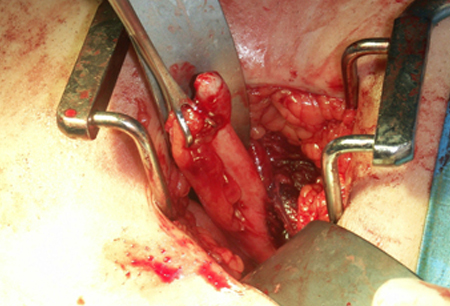Summary
Definition
History and exam
Key diagnostic factors
- abdominal pain
- anorexia
- nausea and vomiting
- right lower quadrant tenderness
- high’ or ‘intermediate’ risk score
- tense, rigid abdomen
- hypotension and tachycardia
- palpable mass
Other diagnostic factors
- age of occurrence
- low-grade pyrexia
- flushed face and a fetor
- reduced bowel sounds
- tachycardia
- loose stool
- constipation
- flexed right hip (psoas sign)
Diagnostic investigations
Treatment algorithm
Contributors
Expert advisers
John Abercrombie, FRCS
General and Colorectal Surgeon
Queen’s Medical Centre
Nottingham
UK
Biography
JA is Clinical Lead for General Surgery, Getting It Right First Time.
Disclosures
JA is trustee and council member of the Royal College of Surgeons of England.
Acknowledgements
BMJ Best Practice would like to gratefully acknowledge the previous expert contributor, whose work is retained in parts of the content:
Dileep N. Lobo, MS, DM, FRCS, FACS
Professor of Gastrointestinal Surgery
National Institute for Health Research, Nottingham Digestive Diseases Biomedical Research Unit
Nottingham University Hospitals and University of Nottingham, Queen's Medical Centre
Nottingham
UK
DNL declares that he has no competing interests. DNL is an author of an article cited in the topic.
Peer reviewers
Sarah Richards
General Surgeon
Royal United Hospitals
Bath NHS Foundation Trust
UK
Biography
SR is a specialty advisor in emergency general surgery to the Royal College of Surgeons and an honorary senior clinical lecturer and examiner for the University of Bristol medical school.
Disclosures
SR declares that she has no competing interests.
Kokila Lakhoo, PhD, FRCS, FCS (Paediatrics) MRCPCH, MBCHB
Consultant Paediatric Surgeon
Children’s Hospital in Oxford and the University of Oxford
UK
Disclosures
KL declares that she has no competing interests.
Use of this content is subject to our disclaimer
